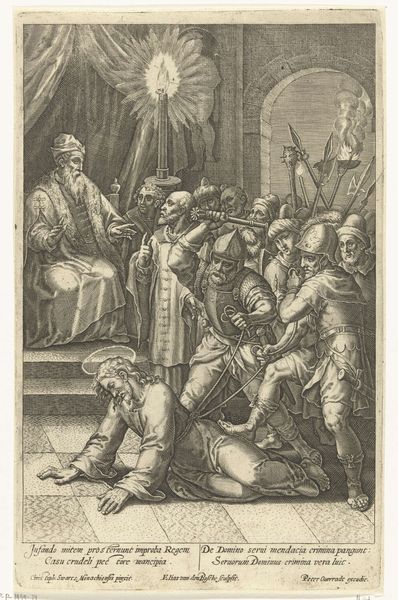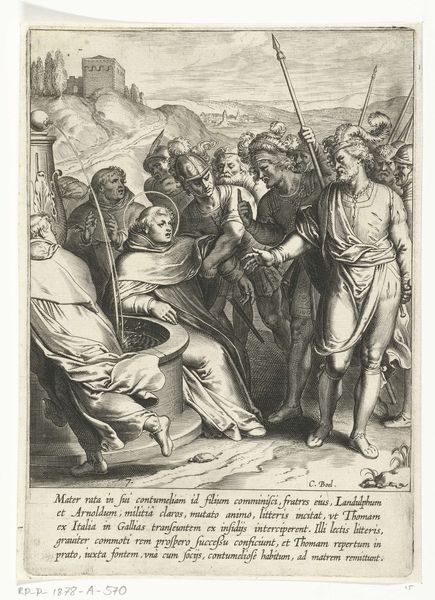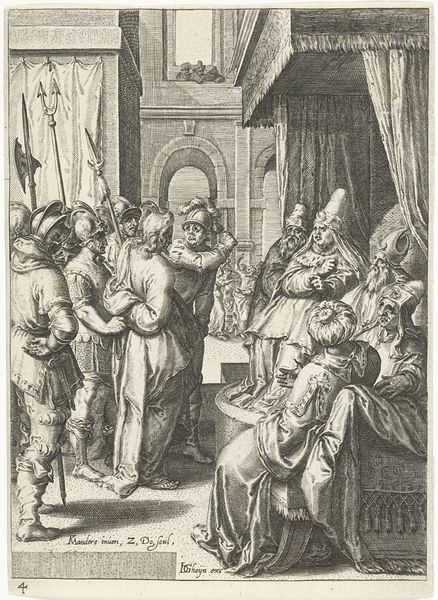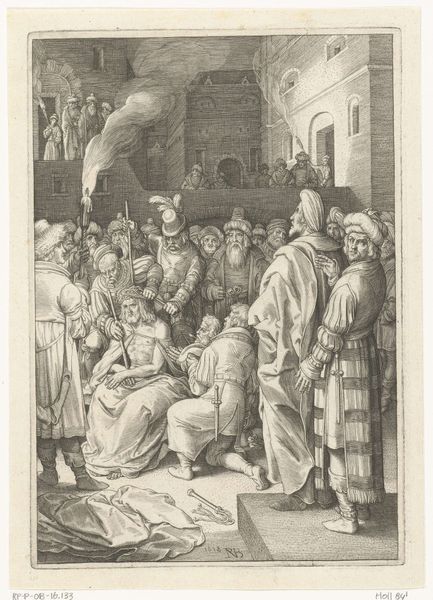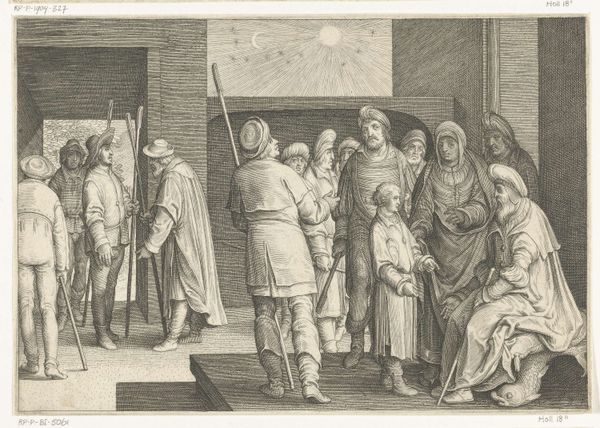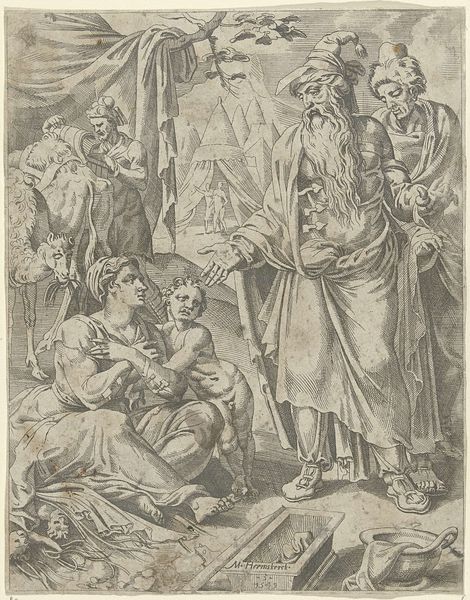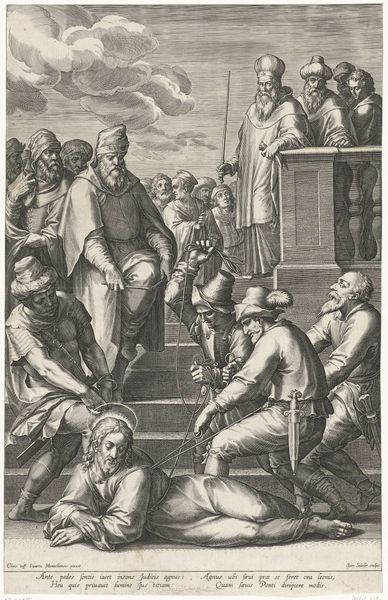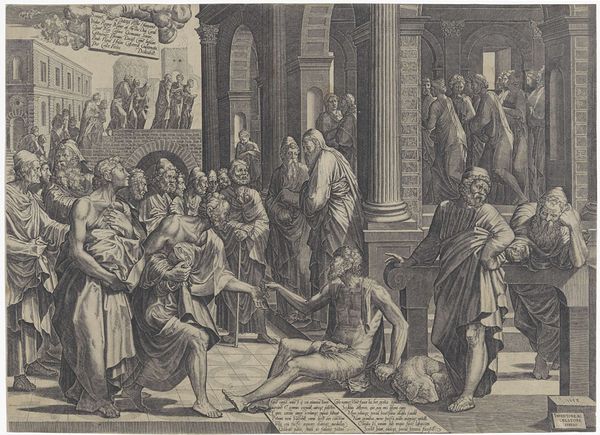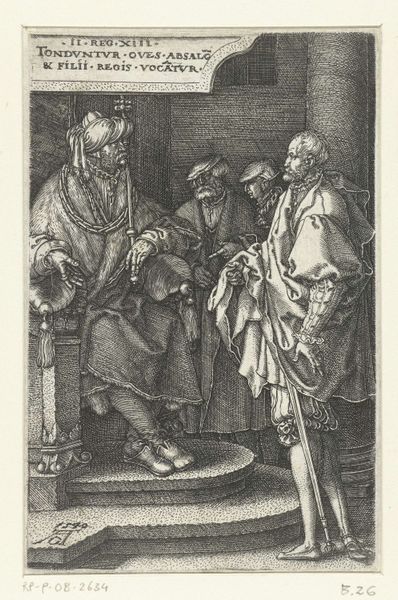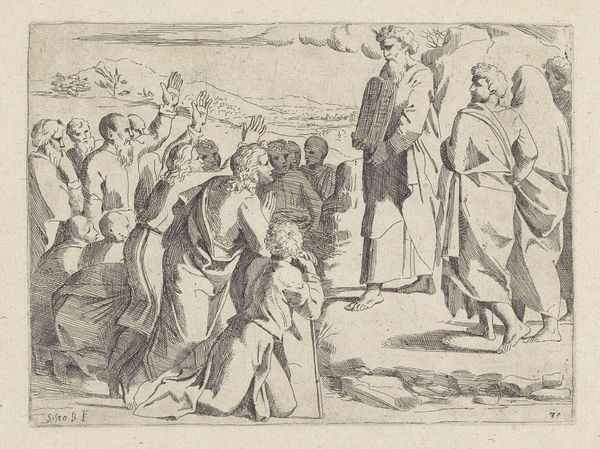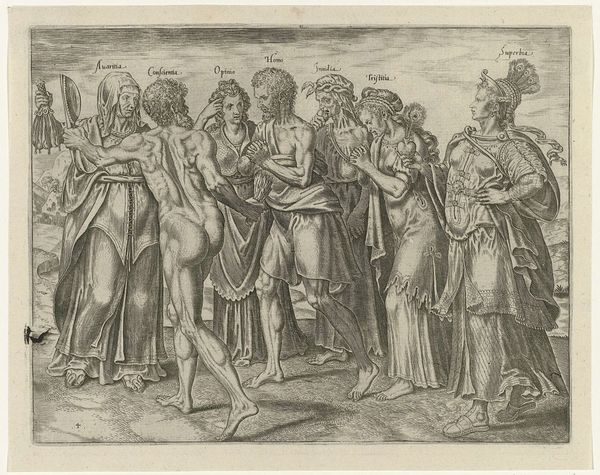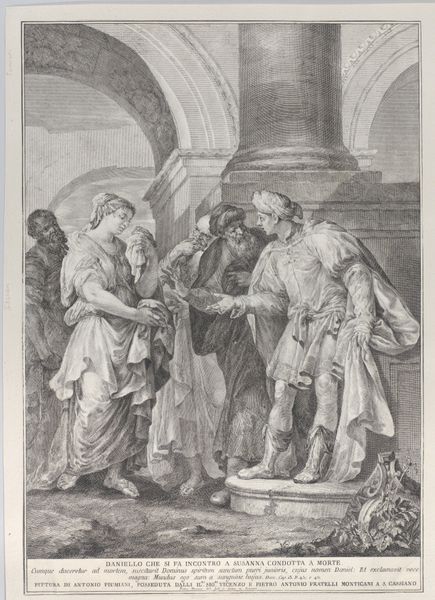
drawing, pen
#
drawing
#
light pencil work
#
pen sketch
#
pencil sketch
#
11_renaissance
#
personal sketchbook
#
sketchwork
#
pen-ink sketch
#
pen work
#
sketchbook drawing
#
pen
#
pencil work
#
history-painting
#
sketchbook art
Dimensions: width 192 mm, height 242 mm
Copyright: Rijks Museum: Open Domain
Curator: Welcome. We're looking at Dirck Volckertsz Coornhert's "Jozef vertelt zijn dromen aan zijn vader", made around 1549-1550. It's a pen drawing from the Rijksmuseum collection, depicting Joseph telling his dreams to his father. Editor: Wow, the detail in this pen sketch is incredible. There’s a somber, almost apprehensive mood radiating from the scene. You can feel the weight of those unspoken premonitions hanging in the air. Curator: Absolutely. The composition emphasizes Joseph's vulnerability and Jacob's pensive expression, as he is surrounded by family members. These biblical narratives provided fertile ground for exploring complex relationships and moral lessons within a 16th-century context. Editor: There's something striking about how Coornhert rendered those faces – the clustered brothers looking a bit… dubious, perhaps envious? And those mournful faces looking over the scene above. And look at Joseph's almost apologetic posture in relaying this fateful information to his seated father. Curator: Exactly. Think about the religious and political climate of the time. Art wasn’t just decoration. These kinds of visual depictions played a significant role in moral instruction and reinforcing social hierarchies, reflecting Protestant Reformation ideals, in that particular case. The distribution of printed images allowed new access to these narratives to wider audiences than ever before. Editor: It is more intimate, isn't it? This medium makes it feels more personal, almost like a private glimpse into a very tense family meeting, sketched directly from life... well, maybe not *directly* from life, as these figures are all idealized, almost ageless. Curator: And we see this in other sketches of the time period, with this balance of observation and the prevailing artistic conventions to show universal meaning and social concerns, too. The Renaissance valued both personal expression and public messaging. Editor: Looking at this sketch has got me thinking about how even simple pen strokes can hold so much emotional and narrative power. Thanks for the added insight! Curator: Indeed. It underscores how visual narratives have been employed in both obvious and subtle ways, echoing societal issues over centuries, prompting enduring discussions.
Comments
No comments
Be the first to comment and join the conversation on the ultimate creative platform.
